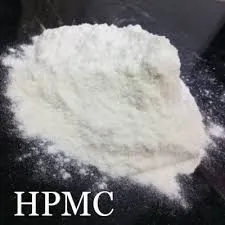
Nov . 13, 2024 05:00 Back to list
hydroxyethyl cellulose thickening mechanism
The Thickening Mechanism of Hydroxyethyl Cellulose An In-Depth Analysis
Hydroxyethyl cellulose (HEC) is a widely used polymer in various industries, including cosmetics, pharmaceuticals, food, and construction. Its thickening properties make it an essential ingredient for many formulations. Understanding the thickening mechanism of HEC is fundamental not only for scientists and manufacturers but also for consumers who benefit from its applications. This article delves into the biochemical and physical principles that underpin HEC's thickening abilities.
HEC is a non-ionic, water-soluble cellulose ether derived from natural cellulose. Cellulose itself is a linear polymer made up of β-D-glucose units, and HEC is produced by chemically modifying certain hydroxyl groups in cellulose with ethylene oxide. This modification increases the solubility of cellulose in cold water and enhances its thickening properties, making HEC an effective functional ingredient.
The thickening mechanism of HEC primarily involves its interaction with water, which induces a change in viscosity. When HEC is dispersed in water, it absorbs water molecules through hydrogen bonding, which causes the polymer chains to swell. As these chains expand, they create a network of entangled polymer segments. This entanglement leads to an increase in the solution's viscosity. The degree of swelling and the viscosity increase depend on several factors, including the concentration of HEC, temperature, and shear rates.
At low concentrations, HEC molecules remain separate and are able to move freely in the solution, resulting in minimal thickening. As the concentration of HEC increases, the molecules start to overlap and interact more, forming a more cohesive structure. This forms a three-dimensional network that effectively traps water within, thereby creating a thicker solution. The intrinsic molecular characteristics of HEC, such as its molecular weight and degree of substitution, can also significantly influence its thickening capabilities. Higher molecular weight HEC tends to provide greater viscosity due to the longer polymer chains creating more extensive networks in the solution.
hydroxyethyl cellulose thickening mechanism

Temperature plays a critical role in the thickening process. As the temperature increases, the solubility of HEC in water can be affected, along with the molecular mobility of the polymer chains. This means that formulators must consider temperature variations during the mixing and application of HEC-containing products to ensure optimal viscosity is achieved at the intended use temperature.
Another important aspect of HEC’s thickening mechanism is its response to shear forces. Under shear, such as during mixing or application, HEC chains can align and reorient, which can temporarily reduce viscosity. Upon cessation of shear, the polymer chains have the ability to revert to their entangled state, and the viscosity returns. This shear-thinning behavior is particularly advantageous in products that require easy application, such as lotions and creams, as it allows for effortless spreading while maintaining a thicker texture once applied.
In the cosmetic industry, HEC is prized not only for its thickening properties but also for its ability to stabilize emulsions and suspend solid particles, which enhances the overall quality of formulations. In pharmaceuticals, HEC finds applications as a thickening agent in gels and as a controlled-release agent for drugs, ensuring a consistent and sustained delivery over time.
Furthermore, the environmental aspect of HEC cannot be overlooked. As a derivative of cellulose, HEC is biodegradable and derived from renewable resources, making it an appealing choice in a world increasingly focused on sustainability.
In conclusion, the thickening mechanism of hydroxyethyl cellulose is a complex interplay of polymer chemistry, concentration, temperature, and shear conditions. Its unique properties make it an invaluable ingredient across multiple sectors. As research continues and the demand for sustainable materials grows, the applications and methods for utilizing HEC are likely to expand, solidifying its role as a key player in thickening and stabilizing formulations in numerous industries. Understanding these mechanisms not only benefits manufacturers but also enhances consumer awareness of the products they use daily.
-
Versatile Hpmc Uses in Different Industries
NewsJun.19,2025
-
Redispersible Powder's Role in Enhancing Durability of Construction Products
NewsJun.19,2025
-
Hydroxyethyl Cellulose Applications Driving Green Industrial Processes
NewsJun.19,2025
-
Exploring Different Redispersible Polymer Powder
NewsJun.19,2025
-
Choosing the Right Mortar Bonding Agent
NewsJun.19,2025
-
Applications and Significance of China Hpmc in Modern Industries
NewsJun.19,2025







